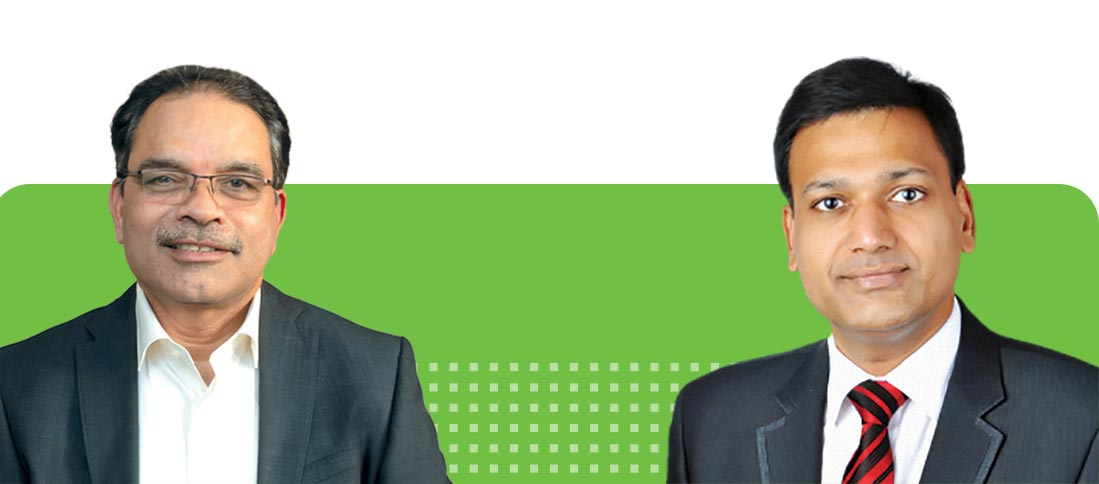
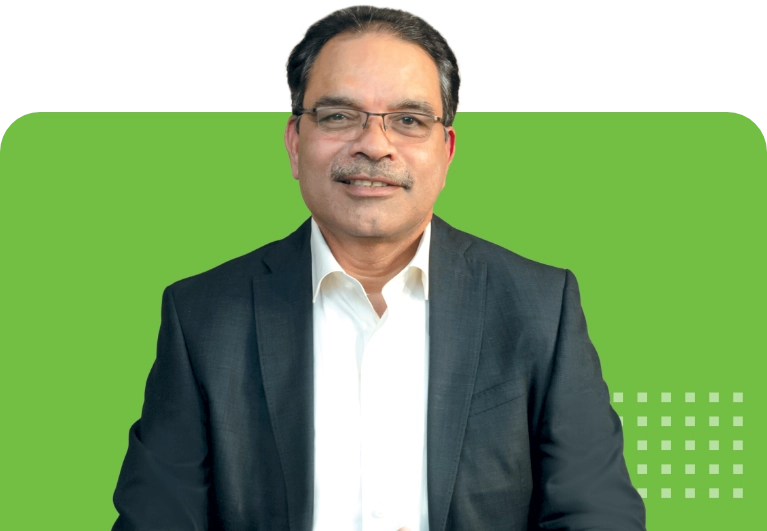
Vedanta delivered an outstanding performance in FY 2023‑24. We achieved record production across key businesses led by a consistent focus on operational excellence. Financial results were equally impressive with the second-best annual revenue and EBITDA, and strong margins even in a challenging commodity market led by cost optimisation efforts. The year also saw us complete various capex projects, embark upon strategic initiatives and advance sustainability efforts. Headed into the future, Vedanta is on a stronger footing, ready to seize new opportunities and secure predictable long-term growth, aligned with the interests of the nation and the stakeholders.

Amidst dynamic markets, Vedanta delivered outstanding financial results driven by a commitment to operational excellence, continued cost optimisation, disciplined capital allocation and liabilities management. These efforts fuelled growth and margin expansion while fortifying our financial framework, business resilience and long-term sustainability.we remain on track to meeting our priorities of delivery, deleveraging and demerger in FY 2024-25 to maximise growth, profitability and value creation for stakeholders.
FY 2023-24 was marked by headwinds in commodities demand and
prices. How did Vedanta navigate the challenges to ensure
meeting the demand while maintaining stability?
The Indian economy
demonstrated resilience in FY 2023-24, emerging as a major
growth contributor amidst global uncertainty. Substantial
investments in physical and digital infrastructure, alongside
the emphasis on manufacturing and capital expenditure, shaped
the nation’s growth narrative.
As for the commodities market, FY 2023-24 was dynamic. Demand for commodities like aluminium, zinc and iron ore was robust. Prices though experienced volatility influenced by global dynamics, geopolitical developments and sector‑specific demand patterns. The average LME prices of aluminium and zinc fell by 11% and 25% year-on-year.
Vedanta stood firm, supported by a portfolio aligned with the nation’s growth and infrastructure development needs while adapting to market shifts with agility. Our sharp focus on operational excellence and commitment to cost leadership allowed us to navigate commodity price fluctuations. Through continuous optimisation of production processes, strategic sourcing and adaptability, we significantly reduced our costs. This ensured strong margins alongside consistent delivery of high-quality products to customers. The teams also did a fantastic job in meeting the rising commodity demand, resulting in robust operational performance and surplus cash generation across businesses.
Reflecting on the strong performance delivered in FY 2023-24,
could you provide an overview of Vedanta’s achievements and
milestones during the period?
Vedanta delivered an
excellent set of performances in FY 2023-24, despite the
volatility in the commodity markets. We maintained our
leadership position in cost of production while expanding volume
across businesses. The Aluminium and Zinc businesses remained
among the lowest‑cost producers globally with first-quartile and
first‑decile positions in their respective global cost curves.
Coming to individual performances, the Aluminium business delivered the highest-ever metal production of 2,370 kt, a growth of 3% over the previous year. Seven consecutive quarters of aggressive cost reduction drove down the cost of production (COP) by US$ 942 per tonne to US$ 1,711 per tonne in Q4 FY 2023-24. The average COP for the year stood at US$ 1,796 per tonne, resulting in a 67% growth in the Aluminium segment EBITDA of ₹ 9,657 crore for FY 2023-24.
Zinc India delivered outstanding all-round performance. It recorded an all-time high annual mined metal production of 1,079 tonnes, a 2% increase over the previous year. Silver production was highest-ever at 746 tonnes, up 5% over the previous year. This translated into a feat of Hindustan Zinc becoming the third-largest Silver producer globally. Sustained cost reduction efforts over five consecutive quarters led to a US$ 242 per tonne decline in COP to US$ 1,051 per tonne in Q4 FY 2023-24. The average COP for FY 2023-24 was US$ 1,117 per tonne, resulting in a segmental EBITDA of ₹ 13,562 crore. Zinc International faced the challenge of lower ore mining, recording a mined metal production of 208 kt, including 147 kt at the Gamsberg mine and 61 kt at BMM.
The Oil & Gas business produced 128 Kboepd with an OPEX of US$ 13.9/boe. A significant development was the submission of the country’s first field development plan for the OALP field Jaya.
The iron ore Karnataka (IOK) mines achieved highest-ever annual sales of 5.9 million tonnes, a 19% increase over the previous year due to improvement in logistics efficiency. Pig iron production was highest-ever at 831 kt, growing by 19%. We also operationalised the 3 MTPA Bicholim mine in Goa, marking the commencement of the first mining operation in the region in nearly six years. FACOR recorded the highest‑ever Ferrochrome production of 80 kt, an increase of 18% over the previous year. Copper business production stood at 141 kt with contributions from India and Fujairah. Our power plants sold 13,443 million units of electricity, becoming one of the largest commercial power suppliers to the national grid.
ESL Steel achieved its highest-ever saleable production and dispatches at 1.39 million tonnes each, a growth of 8% and 11% respectively. The business consumed the highest-ever captive iron ore from its fully ramped-up iron ore mines acquired last year.
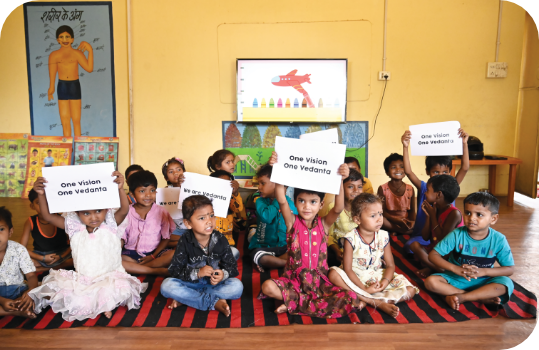
The strong all-round operational performance resulted in second-ever highest revenue from operations and EBITDA of ₹ 1,41,793 crore and ₹ 36,455 crore respectively. Cost efficiency measures, particularly in the Zinc and Aluminium businesses, helped mitigate the impact of weak commodity prices, bolstering EBITDA margins by 240 basis points to 30%. RoCE also increased by 240 basis points to 23%. PAT was lower 22% to ₹ 11,254 crore driven by one time MAT write off. The performance reflects our adeptness in navigating headwinds and capitalising on growth opportunities.
Vedanta is committed to maximising value creation for its
stakeholders. Can you share how the Company delivered on this
objective in FY 2023-24?
Vedanta has consistently
demonstrated its ability to create value for all stakeholders.
Through our ongoing efforts to foster strong relationships
across the ecosystem, we ensure operational stability and
resilience. This strengthens our financial position and drives
long-term sustainable growth.
Consistent with the commitment to declared attractive returns to shareholders, Vedanta declared one of the highest dividends at ₹ 29.5 per share in FY 2023-24, representing a healthy 11% yield. Our 5-year average dividend yield stood at ~17%, ~10x that of NIFTY 50 companies.
We also take pride in creating value for all other stakeholders. Our contribution of ~₹ 54,402 crore to the national exchequer, was instrumental in supporting vital government projects and thus national development. In our community-building effort, we invested over ₹ 438 crore in various educational, healthcare and infrastructure development projects. Supplier and buyer partners were supported by ensuring ethical business practices, timely payments and fair pricing, ultimately benefiting our entire supply chain.
What specific measures were taken to strengthen the cost
leadership position in Aluminium and generate 1,000 US$/t of
EBITDA margin?
Aluminium business is the
cornerstone of our growth story, and as we advance through FY
2024‑25, Vedanta Aluminium is on a transformative trajectory
with the completion of key growth projects aimed at driving
all-round performance.
These include the ongoing 1 MTPA expansion at BALCO that will expand total smelting capacity to 3 MTPA, positioning us among the top 3 producers globally ex-China. We expect its commissioning in H2 FY 2024-25.
At Lanjigarh, the commissioning of 1.5 MTPA Train-I has increased refining capacity to 3.5 MTPA, with Train-II of another 1.5 MTPA capacity scheduled for Q2 FY 2024-25. A debottlenecking exercise is underway to achieve 6 MTPA alumina refinery capacity by FY 2025-26.
Mining operations are being reinforced to secure low‑cost raw materials. The development of the 9 MTPA Sijimali bauxite mine is progressing well, with the initial production expected in Q3 FY 2024-25. For coal, Jamkhani mine is producing at 100% of weighted capacity, and Kurloi, Ghogharpalli and Radhikapur mines are poised for commissioning within the next 9 -12 months.
This strategic move not only enhances the current bond structure of Vedanta Resources but also offers attractive terms for our bondholders. The initiative comes in addition to the balance sheet deleveraging by over US$ 3.7 billion in the last two years which brought down debt to US$ 6 billion as of 31 March 2024.
Downstream, we are scaling up value-added products (VAP) capacity at Jharsuguda and BALCO from 1.4 MTPA to 2.6 MTPA, increasing its share from 60% to 90%. Rolled product capacity is also being increased from 44,000 TPA to 1,00,000 TPA.
These strategic initiatives in volume growth, backward integration and value addition are poised to revolutionise our cost structure. We anticipate an multi-fold increase in our EBITDA margin and at 3 MTPA capacity, the Aluminium business would alone generate more than US$ 4 billion EBITDA
Can you provide details on the Company’s capital expenditure
for FY 2023-24, including the progress of expansion and
debottlenecking programmes? How much is the projected capital
expenditure for the next fiscal?
As a growth-focussed
organisation, Vedanta remains committed to disciplined capital
allocation to achieve sustainable growth and value creation for
all stakeholders.
In addition to capex programmes in the aluminium business, we are undertaking various other volume expansion and vertical integration projects. Together, ₹ 12,267 crore (US$ 1.4 billion) was invested in these efforts, supplementing the ₹ 10,271 crore (US$ 1.2 billion) spent in the previous year.
All ongoing projects are progressing as per schedule. Zinc India, following the successful commissioning of the Fumer plant and the mill revamping, is progressing on track with the 160 KTPA Roaster Plant and 510 KTPA fertiliser plant. Gamsberg Phase 2 project, aimed to expand the MIC capacity to 500 KTPA, has achieved nearly 60% completion.
The Oil & Gas business aims to halt and reverse production decline through new recovery technologies, drilling additional infill wells, extending polymer-flood EOR schemes and surfactant flood. Phase 1 is on track, with incremental production expected in Q1 FY 2024-25. For FY 2024-25, we plan to execute a 10-well exploration campaign in Assam and mobilise rigs to our east and west coast assets for multi-year drilling programmes. The power business is synchronising Unit 1 of the 150 MW Meenakshi Power Plant, which alongside securing financing for Athena takes us a step closer to delivering on our goal of supplying ~5 GW of commercial power within the next two years.
The iron ore business is poised for a production ramp-up to 12 MTPA, complemented by 1 MTPA of value-added business (VAB). This comes with the recent commissioning of Bicholim mines of 3 MTPA capacity, securing environment clearance for expanding IOK to 7.2 MTPA and efforts to ramp-up in Liberia operations from 1 MTPA to 2.5 MTPA. The steel business is on track to expand capacity to 3.5 MTPA in FY 2024-25. Steel and VAB expansion, together will enable us to produce 4.5 MTPA of steel and pig iron in our facilities.
In FACOR, the Board has approved a capex of ₹ 2,650 crore for expanding ferrochrome capacity from 150 KTPA to 450 KTPA, which will make us India’s largest ferrochrome producer by FY 2026-27.
A capex of US$ 1.9 billion is envisaged for these efforts in the upcoming fiscal year, which will position Vedanta for a successful future.
The Board approved the demerger of Vedanta Limited. into six
independent pure-play companies. How does this strategic move
align with the Company’s broader strategy and what is the
anticipated completion timeline?
Vedanta’s strategic
demerger plan is set to be a transformative step, designed to
achieve multiple objectives. One, it will create six distinct
world-class companies, each with leading cost positions in their
respective sectors and markets. Each of these would be poised to
capitalise on its unique strengths and market position through
focussed strategies and capital allocations.
Two, it will improve liquidity and capital growth, as independent capital structures will facilitate attracting direct investments. Three, it will give global and Indian investors the potential to invest in their preferred vertical, thereby attracting significant investments into the expansion and growth of each of the businesses. Four, it will enable greater management autonomy as the businesses transition from centralised to independent management. Together, these initiatives set the stage for sustainable growth and long-term stakeholder value.
As of 31 March 2024, we have obtained a No-Objection Certificate (NOC) from the stock exchange and are awaiting SEBI’s NOC. Discussions with creditors for debt allocations are ongoing. Following these, the scheme will be submitted to NCLT for further processing.
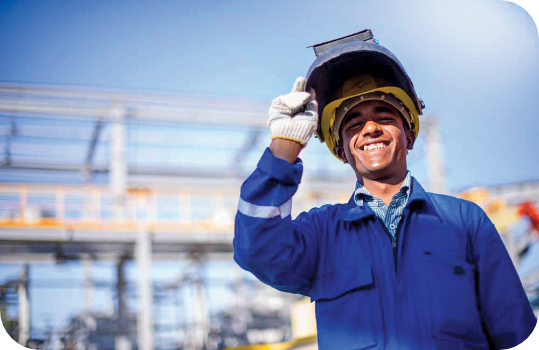
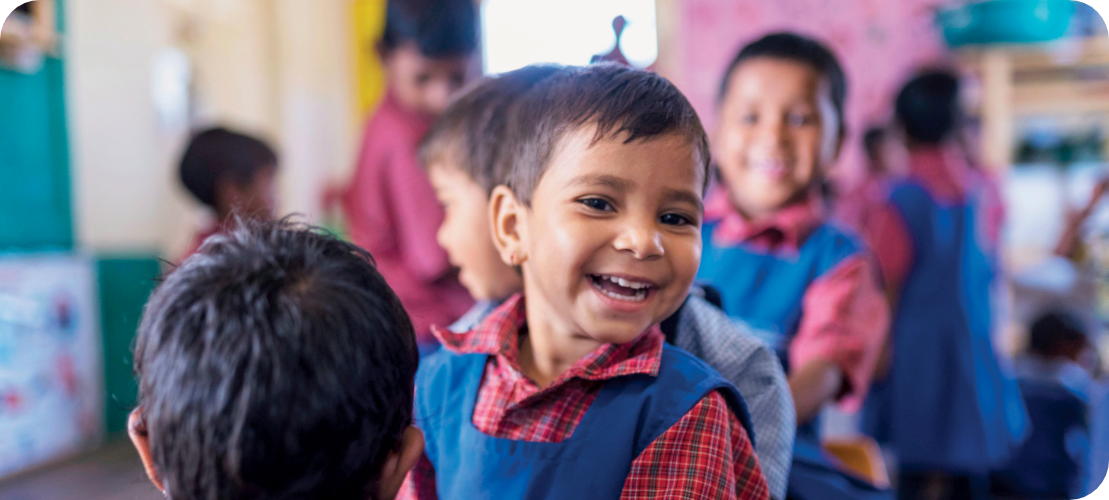
During the year, Vedanta Resources the parent company of
Vedanta Limited, completed its liability management exercise.
How did this impact the Company’s ability to handle existing
debt obligations and strengthen its long-term
resilience?
The liability management
exercise conducted by Vedanta Resources aimed at optimising the
overall debt structure. This involved extending the maturities
of three bonds due in January 2024, August 2024, and March 2025
to beyond 2027. An overwhelming 97% of bondholders consented to
this move, reflecting our strong financial position and the
trust of our stakeholders.
This strategic move not only enhances the current bond structure of Vedanta Resources but also offers attractive terms for our bondholders. The initiative comes in addition to the balance sheet deleveraging by over ~US$ 3.7 billion in the last two years which brought down debt to US$ 6 billion as of 31 March 2024. Together, these substantially strengthens our liquidity position and long-term resilience, providing us with greater headroom for managing existing debt and creating a more sustainable capital structure for future growth.
What milestones has Vedanta achieved in its sustainability
journey, and what are the upcoming initiatives in this
area?
Vedanta is committed to
‘doing business with purpose’, aligning our goals with India’s
needs and emphasising environmental and social responsibility.
Our sustainability framework focusses on three key areas:
Transforming Communities, Transforming the Planet and
Transforming the Workplace. FY 2023-24 was yet another milestone
year in this journey, as we embarked on over 650 high-impact ESG
initiatives.
These efforts are paying off with global recognitions. Vedanta was ranked 3rd in the S&P Global Corporate Sustainability Assessment 2023, surpassing previous benchmarks. Our subsidiary HZL was ranked 1st in the metals and mining peer group and Vedanta Aluminium was ranked 1st among global aluminium peers.
Transforming the planet: Decarbonisation is a top priority for us. We have envisaged investing US$ 5 billion over the next decade for decarbonisation activity. We aim to deploy 2.5 GW of round the clock renewable energy (RE) by 2030. As of FY 2023-24, we stand at 838 MW of RE round-the-clock projects under construction against RE power delivery agreements (PDAs) of 1,826 MW.
These efforts are paying off with global recognitions. Vedanta was ranked 3rd in the S&P Global Corporate Sustainability Assessment 2023, surpassing previous benchmarks. Our subsidiary HZL was ranked 1st in the metals and mining peer group and Vedanta Aluminium was ranked 1st among global aluminium peers.
Various water recycling and consumption optimisation efforts helped cumulatively saved 4.5 million m3 of freshwater since FY 2020-21. Five of our businesses are already water‑positive. Pledging to plant 7 million trees under the World Economic Forum’s movement, we have already reached 2 million by the end of FY 2023-24. We are pioneering sustainable logistics, exemplified by deploying several battery-operated electric vehicles in underground mining and HZL planning to induct 180 LNG vehicles.
Transforming the workplace: Vedanta remains at the forefront of redefining mining operations through technological advancements and automation. These have contributed to safer and more efficient operations. Our workforce can now safely operate machinery remotely, kilometres under the ground. We are also redefining inclusivity with progressive practices. More than 20% of our workforce is women and we have achieved this, six years before the target year of 2030. Furthermore, we have inclusion policies for the LGBTQIA+ community and advanced parental leave policies.
Transforming Communities: Vedanta’s philanthropic initiatives positively impacted over 50 million lives in FY 2023-24, focussing on childcare, nutrition, women’s empowerment, healthcare, skilling, sports and animal welfare. Our flagship project, Nand Ghar, is actively addressing issues of child malnutrition, education and healthcare and women empowerment through skill development in rural India. We have transformed more than 6,000 Anganwadis (or government-run child-day-care centres) in India, but our ambition is to transform all 1.4 million such centres across the country.
How do you perceive the industry scenario in the near term?
How is Vedanta future-ready in response to these
dynamics?
The Indian economy is
poised for rapid decadal growth, and commodities being a
critical part of the industries’ value chain will witness
sustained demand. Various positive indicators also hint at a
potential rebound in the prices of commodities, including
declining surplus, improved demand in China and restocking
efforts.
Sustainability and the related potential transition risks though remain an important look-out factor. Europe’s recent introduction of the Carbon Border Adjusted Mechanism (CBAM) underscores the importance of reducing carbon emissions from imported goods. While our exposure to this market is minimal, this development sets a precedent for what the future holds.
Vedanta adopts a stance of cautious optimism, emphasising sustainability and growth to navigate evolving market dynamics. Our growth plans entail capacity expansion across businesses alongside the long-term objectives of vertical integration, operational excellence and deleveraging. These are poised to enhance our resilience and future readiness. At the same time, we remain focussed on making scalable efforts towards achieving ambitious ESG targets. We are innovating for a greener business model, targeting net water positivity by 2030 and net carbon neutrality by 2050 or sooner through investments in RE and energy transition projects.
With a low cost and world-class assets across businesses, coupled with a strong financial position, commitment to ESG and expansion plans, we are well-positioned to capitalise from the strong demand trend and the ongoing upward trajectory of the pricing cycle. This aggressive growth strategy will help unlock our potential, significantly enhancing production capacity, and elevating overall performance, ultimately unlocking exceptional value for all of our stakeholders.